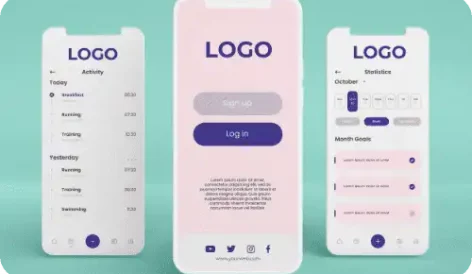Learn the basics of
UX Design Course Online
Upskill your design and web development team in the basic principles of UX design. This online professional UX Design course will equip your team with a theoretical understanding in the fundamentals of UX design based on existing research and industry standards, as well as provide a practical approach to UX design through building several functional prototypes to cement their learning of UX design. Empower your team with the skills to craft a seamless, pleasant, and valuable online experience for your users to make certain that they get what they need with minimal effort.
Key Learning Objectives:
- Learn all about the foundation of UX design
- Understand the importance of UX design research
- Explore popular theories used to inform the UX design process
- Learn how develop prototypes from scratch using UX design specific software
- Understand the process of user onboarding
- Explore context specific applications and prototypes such as e-commerce platforms

Ideal for:
Graphic designers, web development teams, anyone looking to get into UX design.
Course outcome:
Develop teams who are able to improve user experience.
Course outline:
08
Weeks
02
Modules
16
Lessons
Course accreditation:
Upon completion of this leadership training course your employee will receive an accredited certificate assessed by global academic partner, the CPD Certification Service.
Globally recognised by:

Course details
MODULE 1
Diploma in UX Design
MODULE 1
Diploma in UX Design
1.The Foundation in UX Design
By the end of this lesson, you should be able to:
- Investigate the foundation of user experience design
- Explore the user experience design process
- Understand the need for user experience design
2.UX Specialist Review
By the end of this lesson, you should be able to:
- Understand a UX specialist review
- Steps to conduct a UX specialist review
- Jacob Nielsen’s general principles of UI
3.Jakob Nielsen’s 10 principles of UI
By the end of this lesson, you should be able to:
- Recap Jakob Nielsen’s general principles of UI
- Understand the principles of UI
- List examples of where these principles have been applied
4.UX Research
By the end of this lesson, you should be able to:
- Understand to UX research
- Investigate research participant selection
- Understand user-testing
5.User flows
By the end of this lesson, you should be able to:
- Understand the importance of user flow
- Develop a user flow diagram
6.Prototyping: Working with Figma
In this lesson we'll explore the user interface Figma, the prototyping tool used for the delivery our practical sessions. We'll navigate the Figma environment and start by building the first couple of introduction screens for our prototype.
7.Prototyping: Figma elements and user flow
Now that we've covered the basics of the Figma environment, in this lesson we'll learn how to add additional elements and work with user flows as a means to implement navigation in our prototype.
8.Prototyping: Finalising our app
In this lesson we will finalise our prototype application by adding detailed descriptions of our items and by implementing additional functionality which include a feature for launching augmented reality.
MODULE 2
Intermediate in UX Design
MODULE 2
Intermediate in UX Design
1.E-commerce: a pleasant shopping experience
By the end of this lesson, you should be able to:
- Analyse getting users’ attention
- Explore the product range and shortlist the best options
- Review and select the most suitable product
2.E-commerce: payment & checkout
By the end of this lesson, you should be able to:
- Investigate pay, checkout and delivery options
- Consider after-sales support and customer care
- Understand the importance of ongoing user engagement
- Look at the future of e-commerce
3.User onboarding
By the end of this lesson, you should be able to:
- Understand user onboarding
- Investigate the steps to user onboarding
4.Onboarding management
By the end of this lesson, you should be able to:
- Explore the reasons for low app adoption
- Manage onboarding in your organisation
- Create an onboarding checklist
5.E-commerce prototype: Introduction screens
In this lesson we'll start with the basics of building our first e-commerce prototype. We'll also explore the use of Figma plugins and work with more complex animations.
6.E-commerce prototype: Validation logic
In this lesson we'll explore the concept of conditional logic which we will use to build a basic sign up and login screen for our prototype.
7.E-commerce prototype: Global navigation
In this lesson we will provide our e-commerce prototype with a global navigation bar which will allow users to navigate between various screens specific to common e-commerce applications.
8.E-commerce prototype: Transaction flow
In this lesson we will finalise our prototype by adding the key features required to complete a transaction in an e-commerce application. This includes the implementation of adding products to a cart and allowing the user to checkout.